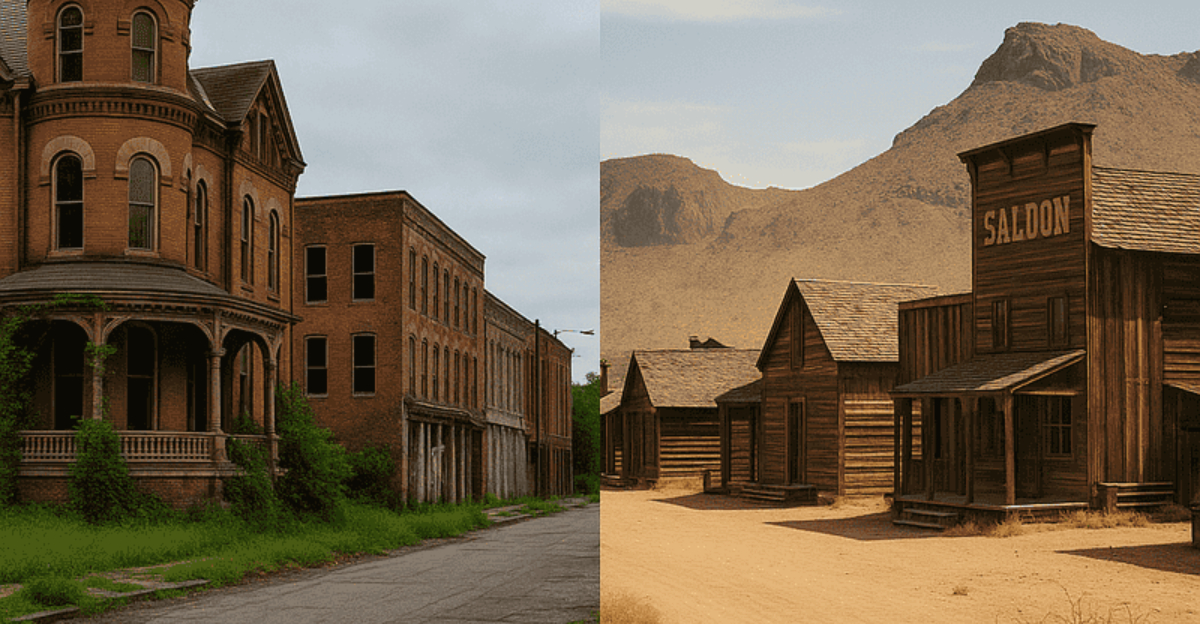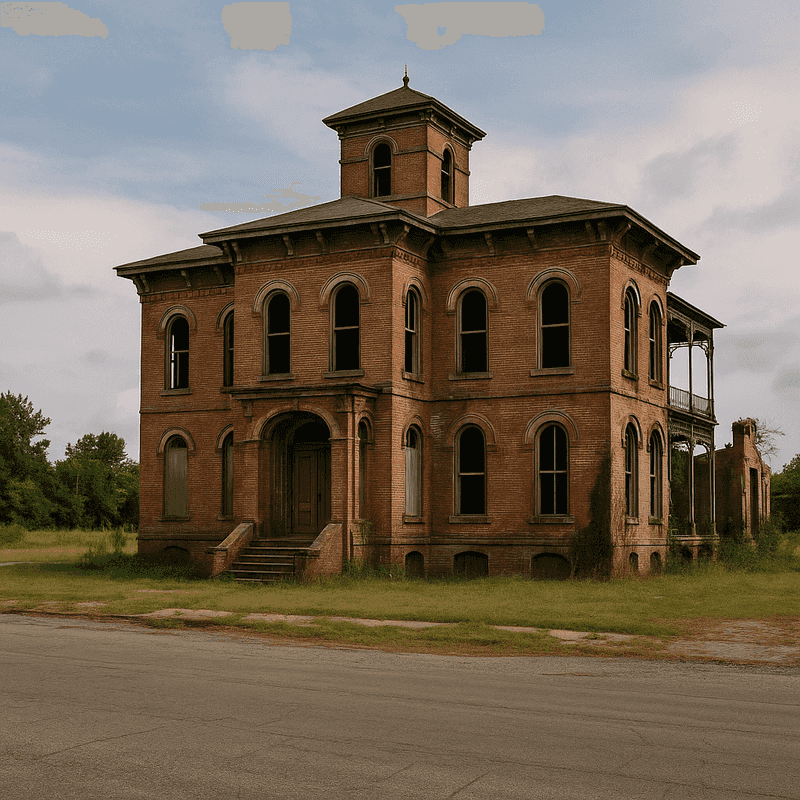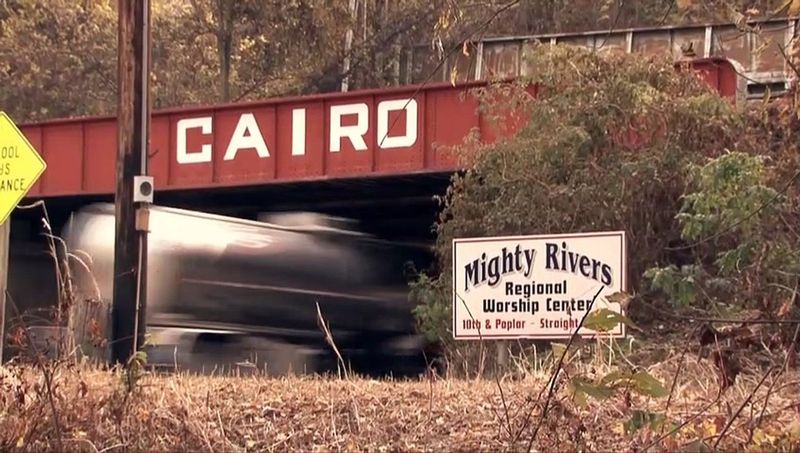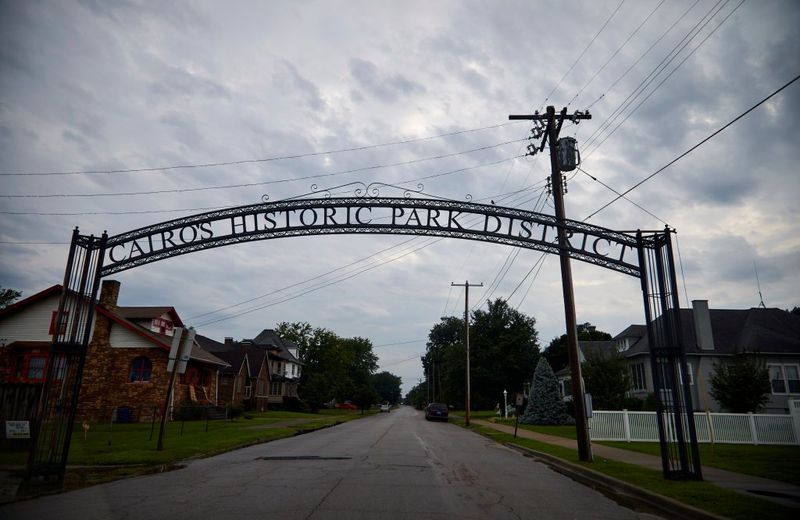Where the mighty Mississippi and Ohio rivers meet, a forgotten city sits quietly among the currents. Cairo, Illinois, once thrived as a bustling river port and rail hub, its streets lined with grand buildings and ambitious dreams. Today, empty storefronts and crumbling mansions tell a different story—one of economic collapse, racial tension, and the slow march of time. Understanding Cairo’s rise and fall reveals how geography, industry, and society shape the fate of American towns.
From River Hub to Rail Junction
Geography blessed Cairo with a prime location at the meeting point of two legendary rivers. In the 1800s, steamboats crowded the docks while trains rumbled through town, making Cairo a vital crossroads for American commerce. Merchants, traders, and travelers all passed through, drawn by the promise of opportunity.
Incorporated in 1857, the city borrowed its name from Egypt’s famous Nile delta capital—a bold comparison that reflected local ambition. By 1920, over 15,000 people called Cairo home. Grand structures like the 1872 Italianate customs house showcased the city’s wealth and confidence.
Mansions lined the streets, and businesses flourished along the waterfront. River traffic and rail lines transformed this strategic spot into a regional powerhouse, proving that location can indeed make or break a community’s fortune.
The Fault Lines of Decline
Cairo’s golden age didn’t last forever. New bridges spanning the Mississippi and Ohio eliminated the need for ferry crossings, and steamboats became relics of the past. Without its transportation monopoly, the city lost its competitive edge almost overnight.
Being the lowest point in Illinois meant constant flood threats, and residents lived behind protective levees that felt more like prison walls. From the late 1960s through the 1970s, racial conflicts tore the community apart. Boycotts, protests, and violence drove families and businesses away in droves.
Population numbers tell the brutal truth: by 2020, only about 1,733 residents remained—a catastrophic drop from the city’s peak. Economic opportunities vanished, infrastructure crumbled, and hope became Cairo’s scarcest resource. Geography that once blessed the town now seemed like a curse.
Architectural Relics and Shifting Landscapes
Walking through Cairo today feels like stepping into a time capsule wrapped in decay. The Old Custom House, built between 1869 and 1872, still stands as a dignified reminder of federal importance and river commerce. Its architectural details speak of an era when Cairo mattered on the national stage.
Nearly 980 buildings from the 1890s earned the historic district a spot on the National Register of Historic Places. Unfortunately, many structures now show advanced deterioration or have disappeared entirely. Vacant lots outnumber occupied homes in some neighborhoods.
Gaunt facades and silent factories create an eerie atmosphere that photographers and urban explorers find hauntingly beautiful. This landscape demonstrates how economic forces and environmental pressures can dramatically reshape communities, leaving physical scars that outlast the people who built them.
Memory, Potential and a Search for Renewal
Not everyone has given up on Cairo. Local advocates are working to preserve historic buildings and promote heritage tourism, believing the city’s unique story deserves to be remembered and shared. Restoration projects tackle one crumbling structure at a time, fighting against decades of neglect.
Cultural storytelling initiatives help residents reclaim their complicated history, acknowledging both the triumphs and tragedies. The river confluence remains geographically special, even if economic conditions haven’t improved much. Poverty, depopulation, and failing infrastructure continue to challenge recovery efforts daily.
For historians and curious travelers, Cairo offers powerful lessons about how communities rise and fall. The city’s layered past—visible in every weathered brick and empty window—invites reflection on what happens when prosperity fades. Full recovery remains uncertain, but the story itself continues to fascinate those willing to listen.
Between Two Rivers Documentary Perspective
Jacob Cartwright and Nick Jordan’s 2012 documentary “Between Two Rivers” captures Cairo through a deeply human lens. Rather than just presenting historical facts, the filmmakers weave together personal stories, archival footage, and striking cinematography. Their non-linear approach helps viewers understand the complex forces that shaped this river town.
The documentary doesn’t shy away from difficult topics like devastating floods, economic collapse, and racial divisions that fractured the community. Interviews with residents reveal both pain and surprising resilience. Some people refused to abandon their hometown despite overwhelming challenges.
This cinematic exploration shows how individual lives intersect with larger historical forces. Viewers witness the tension between Cairo’s African American and white communities, gaining insight into conflicts that accelerated the city’s decline. The film serves as both historical record and tribute to human persistence.
Community Resilience Against the Odds
Despite Cairo’s dramatic population loss, remaining residents demonstrate remarkable determination. Some families have lived there for generations and refuse to let their hometown disappear without a fight. Community organizers work to foster unity across racial lines that once divided the city so bitterly.
Local heroes preserve historical records, maintain what buildings they can, and welcome visitors interested in Cairo’s story. These efforts happen on shoestring budgets with limited resources, making every small victory feel significant. Youth programs try to give young people reasons to stay rather than join the exodus.
The resilience isn’t about denying Cairo’s problems—poverty and infrastructure failures remain very real. Instead, it’s about honoring the past while searching for any viable future. These residents understand their city represents something larger: the struggle of small-town America to survive changing economic tides and demographic shifts.










